What is safe to do during the pandemic? As states begin to reopen, it might feel hard to tell.
Should we still wear masks outside? (Some areas don’t require it, while Virginia just made them mandatory for all public indoor spaces.)
Is it risky to get a haircut? (Several states have reopened salons, while others deem them still too dangerous.)
And can we visit friends and relatives?
It’s not yet clear where Americans stand on these questions as they begin to venture out of quarantine. So over Memorial Day weekend, in partnership with Morning Consult, POLITICO asked nearly 2,000 Americans to rate the relative risk of a dozen common activities from 1 to 10. Then, we asked a panel of 18 public health experts to give their professional opinion.
The survey provides a snapshot of where Americans see the most danger — and where they’re most out of sync with experts.
Let’s first ask the most important respondent of all: You. Here’s a scenario that was especially relevant last weekend:
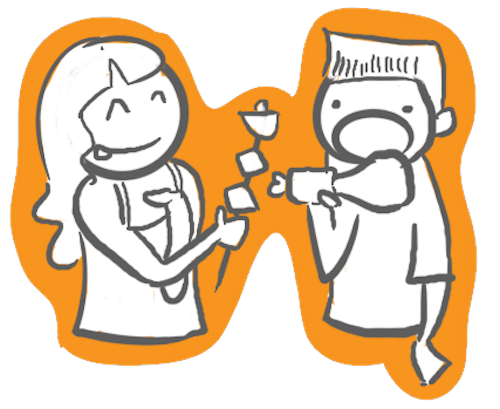
How risky is it for the average person to attend an outdoor barbecue with about 20 people?
No risk
at all
You
1
2
3
4
5
6
7
8
9
10
A great deal
of risk
No risk
at all
A great deal
of risk
Submit
On this question and several others, expert opinion lined up with what Americans already think.
“My first reaction was that there’s remarkable consistency,” said Elizabeth Stuart, a professor at Johns Hopkins Bloomberg School of Public Health, who consulted with POLITICO in creating the survey. “It’s reassuring, at a broad level, that people are getting the public health messages and are able to distinguish between relatively lower risk and higher risk.”
Other situations were a bit thornier. Here’s another scenario:
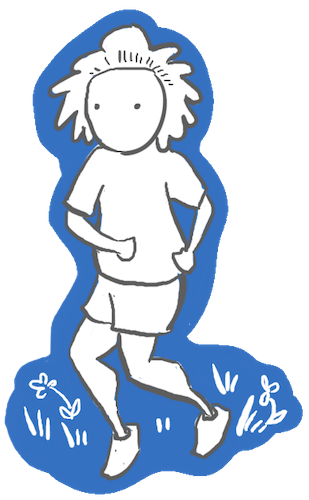
How risky is it for the average person to run outside without a mask?
No risk
at all
You
1
2
3
4
5
6
7
8
9
10
A great deal
of risk
No risk
at all
A great deal
of risk
Submit
In this case, Americans rated the risk of running outside much higher than the experts did, even though both graded it as one of the least risky activities on the list.
In general, POLITICO found a few consistent patterns:
-
Americans are more likely to view activities as risky than experts: In eight of 11 scenarios, poll respondents gave a higher risk rating than the expert panel.
-
There’s a big gap between Democrats and Republicans. On average, Republican respondents rated activities’ risk more than a point lower than Democrats. We saw a similar pattern between men and women, with men finding most activities less risky.
-
Some questions had a wide range of responses, even among experts. Some scenarios were cut-and-dried — nearly everyone agrees it’s quite risky to go to a baseball game in a stadium, for instance.
But the experts struggled to find consensus on others. For instance, our panelists rated the risk of using a public bathroom from 2 to 10, though most responses were on the lower end of the scale. “Different people have different risk tolerances,” Stuart said. And of course, the same survey question can conjure different mental images. “People might be imagining different scenarios in their head.”
Here’s the full list of what we asked, and how the average American’s response compared to the experts’:
Let’s run through each question. On the charts below, we’ve plotted the average riskiness score from our poll respondents and panelists, breaking out answers from Republican and Democratic respondents alongside the overall U.S. average.
We’ll start with the questions that had the biggest gap between experts and everyday people.
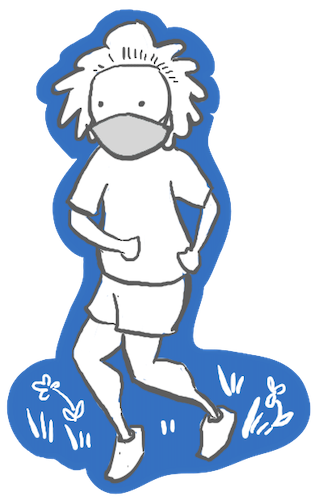
Running outside with a mask
No risk at all
A great deal of risk
1
2
3
4
5
6
7
8
9
10

Running outside without a mask
No risk at all
A great deal of risk
1
2
3
4
5
6
7
8
9
10
As mentioned above, Americans generally found outdoor running more risky than the experts did, regardless of whether a mask is worn.
“If you’re running outside, especially with a mask on, but even without a mask on, if you are in a spot where you can stay distant from others — it’s really pretty low risk,” Stuart said.

Using a public bathroom with multiple stalls
No risk at all
A great deal of risk
1
2
3
4
5
6
7
8
9
10
Both Democrats and Republicans rated this more risky than the experts did. Some on our panel noted that a single-person public bathroom might be even safer, provided it was cleaned regularly. But as noted above, this question had high variability, even among experts.

Having a housekeeper or handyman visit your home
No risk at all
A great deal of risk
1
2
3
4
5
6
7
8
9
10
There’s another sizable gap between experts and Americans here. Our experts noted that brief, controlled contact with others may be less risky than perceived, especially if proper distance is maintained and both parties wear masks.
How easily Covid-19 is spread via surfaces — like the handle of a utility closet, for instance — is still being studied. The CDC recently cautioned that contaminated surfaces remain a risk, though they’re likely not the main way the virus spreads.
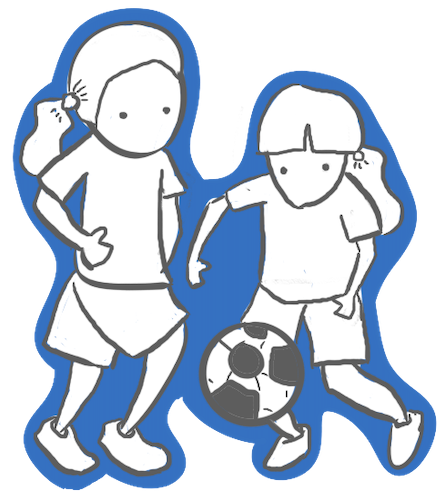
Playing soccer with people outside your household
No risk at all
A great deal of risk
1
2
3
4
5
6
7
8
9
10
For an outdoor activity, we chose soccer for a reason – it’s a sport that involves more than a handful of people, and often brings players into close contact. Both experts and Americans gave this activity middling scores, though polling respondents were a bit more conservative.

Getting a haircut with a mask
No risk at all
A great deal of risk
1
2
3
4
5
6
7
8
9
10

Getting a haircut with a mask
No risk at all
A great deal of risk
1
2
3
4
5
6
7
8
9
10
The barbershop has become a political symbol, as some states allow salons to reopen and others keep them shut. Whether or not it’s safe to get a haircut — with or without a mask — had one of the higher partisan gaps on our survey.
Our expert panel didn’t agree on this one either, with risk tallies for the “masked” version of our question ranging from 2 to 8. (They were more united on getting a haircut without wearing a mask.)

Giving a hug to someone who’s not a member of your household
No risk at all
A great deal of risk
1
2
3
4
5
6
7
8
9
10
Hugging another person not from your household breaks one of the cardinal rules of social distancing — maintaining six feet distance. While both experts and Americans ended up with roughly the same average rating, there was a spread of opinions in both camps.
It could come down to how you hug, Stuart said. “There’s increasing evidence the really high-risk interactions are when you’re in an enclosed space for more than 15 minutes with someone who is infected,” she said. “So a hug where you have masks on and wash your hands after — that might be where some of the lower-risk votes are coming from.”

Attending an outdoor barbecue with about 20 people
No risk at all
A great deal of risk
1
2
3
4
5
6
7
8
9
10
This question had the widest gap between Democrats and Republicans of our survey, with experts falling in between. On the plus side, it’s an outdoor activity, with less opportunity for droplets from an infected person to circulate. But crowds are still inadvisable, and so is shared food.
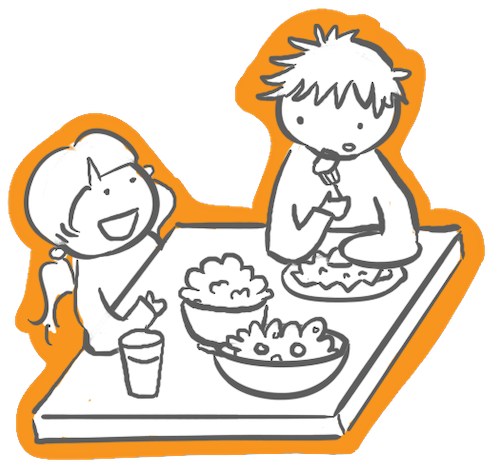
Going to another family’s home for dinner
No risk at all
A great deal of risk
1
2
3
4
5
6
7
8
9
10
Both Democrats and Republicans underestimate the risk of visiting another family for dinner compared to experts, the survey showed.
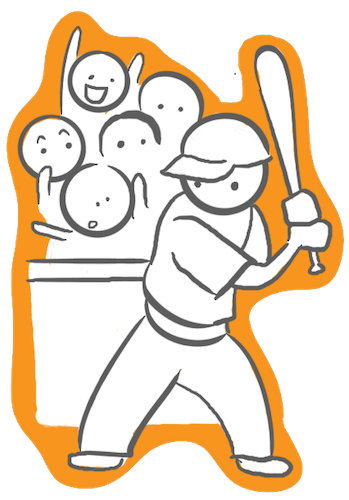
Attending a baseball game at a stadium
No risk at all
A great deal of risk
1
2
3
4
5
6
7
8
9
10
Our expert panel was united on this scenario — going to a baseball stadium is a bad idea. Crowds, tight spaces and lines at concession stands do not mix well with social distancing. “It’s really hard to maintain a six-foot distance when you’re walking to your seat,” Stuart said.
While everyone rated this as the most dangerous scenario on our list, Republicans rated it less risky than Democrats and our expert panel did.
Methodology
Morning Consult polled 1,986 registered U.S. voters between May 22-26. For each of the activities above, poll respondents were given the following prompt:
“As the U.S. begins to reopen amid the coronavirus pandemic, please rate the riskiness of each activity to the average person’s health, with 1 meaning there’s no risk at all, 5 meaning there’s a moderate amount of risk, and 10 meaning there’s a great deal of risk.”
For questions involving masks, half of those surveyed received questions specifying masks would be worn, while the other half had questions specifying masks wouldn’t be worn. (Our expert panel received both sets of questions.)
Margin of error is +/- 2%.
Our expert panel
Thank you to the following people for participating in our experts’ survey. (And special thanks to Elizabeth Stuart and Eric Toner for their help in drafting the survey.)
Keri Althoff, associate professor, Johns Hopkins Bloomberg School of Public Health
Savannah Brenneke, Ph.D. student, Johns Hopkins Bloomberg School of Public Health
Amber D’Souza, professor of epidemiology, Johns Hopkins Bloomberg School of Public Health
Daniele Fallin, professor, Johns Hopkins Bloomberg School of Public Health
Calliope Holingue, postdoctoral fellow, Kennedy Krieger Institute
Michael Horberg, Associate Medical Director, Kaiser Permanente Mid-Atlantic Permanente Medical Group
Carli Jones, Ph.D. candidate, Johns Hopkins University School of Medicine
Chelsea Lutz, Ph.D. student, Johns Hopkins Bloomberg School of Public Health
John Muschelli, assistant scientist, Johns Hopkins Bloomberg School of Public Health
Elizabeth Ogburn, associate professor of biostatistics, Johns Hopkins Bloomberg School of Public Health
Lesley Park, associate director, Stanford Center for Population Health Sciences
Lauren Peetluk, Ph.D. candidate, Vanderbilt University
Kira Riehm, Ph.D. candidate, Johns Hopkins Bloomberg School of Public Health
Andrew Redd, assistant professor of infectious diseases, Johns Hopkins University School of Medicine
Brendan Saloner, associate professor of health policy, Johns Hopkins Bloomberg School of Public Health
Sheree Schwartz, assistant scientist, Johns Hopkins Bloomberg School of Public Health
Elizabeth Stuart, professor, Johns Hopkins Bloomberg School of Public Health
Johannes Thrul, assistant professor of mental health, Johns Hopkins Bloomberg School of Public Health
Source: politico.com
See more here: news365.stream






